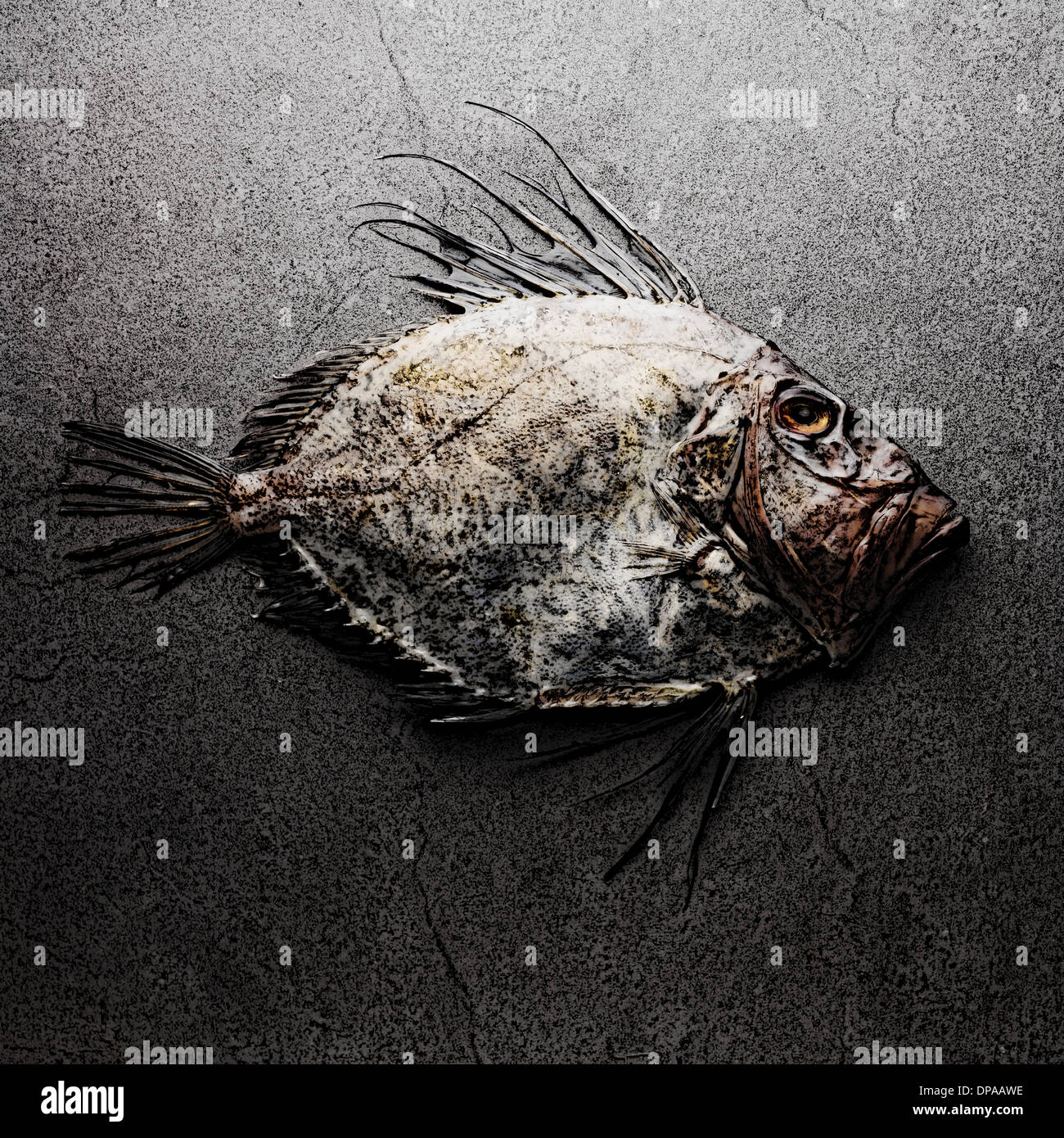The John Dory fish, with its distinctive appearance and rich culinary history, is a fascinating subject for seafood enthusiasts and marine life lovers alike. Known for its unique oval shape, spiky fins, and a dark spot near its gills, this fish has captured the curiosity of chefs and scientists worldwide. Whether you're a culinary expert, an angler, or simply someone interested in marine biodiversity, the John Dory fish is a species worth exploring. Its appeal lies not only in its unique physical traits but also in its role in both commercial fishing and sustainable seafood practices.
Found primarily in the temperate waters of the Atlantic, Pacific, and Indian Oceans, the John Dory fish is a prized catch in many parts of the world. Its delicate, white flesh and mild flavor make it a favorite in gourmet kitchens, while its low-fat content and rich nutrient profile make it a healthy choice for seafood lovers. Despite its growing popularity, many people are still unfamiliar with this remarkable fish. In this article, we will delve into the biology, habitat, culinary uses, and sustainability aspects of the John Dory fish, providing you with a comprehensive understanding of why this species is so special.
Whether you're looking to expand your knowledge of marine life or seeking inspiration for your next seafood dish, this guide is designed to offer valuable insights. By the end of this article, you'll have a deeper appreciation for the John Dory fish and its place in the culinary and ecological worlds. Let’s embark on this journey to uncover the secrets of one of the ocean's most intriguing inhabitants.
Read also:Anjali Arora Video The Rising Star In The Digital Age
Table of Contents
- Biography of the John Dory Fish
- Physical Traits and Identification
- Habitat and Distribution
- Diet and Feeding Habits
- Culinary Uses of John Dory Fish
- Nutritional Benefits
- Sustainability and Conservation
- Fishing Methods and Techniques
- Delicious Recipes Featuring John Dory Fish
- Frequently Asked Questions
Biography of the John Dory Fish
The John Dory fish, scientifically known as Zeus faber, has a rich history that dates back centuries. This species has been a part of coastal cultures around the world, often featured in folklore and traditional fishing practices. The name "John Dory" is believed to have originated from the French term "jaune doré," meaning "golden yellow," referring to its distinctive coloring. Over time, this name evolved into the English moniker we know today.
To better understand the John Dory fish, here is a table summarizing its key characteristics:
| Scientific Name | Zeus faber |
|---|---|
| Common Names | John Dory, St. Peter's Fish |
| Average Length | 30-40 cm (12-16 inches) |
| Average Weight | 1-2 kg (2-4 pounds) |
| Lifespan | 12-15 years |
| Habitat | Temperate waters of the Atlantic, Pacific, and Indian Oceans |
Historical Significance
Historically, the John Dory fish has been associated with religious symbolism, particularly in Christian traditions. Its dark spot near the gills is often likened to the "thumbprint of St. Peter," giving rise to its alternate name, St. Peter's Fish. This association has made it a revered species in certain cultures, often featured in religious art and literature.
Role in Modern Fisheries
Today, the John Dory fish is an important species in commercial fisheries, especially in Europe and Australia. Its growing popularity in gourmet cuisine has led to increased demand, making it a key player in the seafood industry. However, its relatively slow growth rate and low reproductive output make sustainable fishing practices essential for its long-term survival.
Physical Traits and Identification
One of the most distinctive features of the John Dory fish is its unique appearance, which sets it apart from other marine species. The fish has an oval-shaped body that is laterally compressed, giving it a flat and streamlined profile. Its skin is covered in small, rough scales that provide a sandy texture, allowing it to blend seamlessly with its surroundings.
The John Dory fish is easily identified by its dark, circular spot near the center of its body. This spot, often referred to as the "eye spot," serves as a defense mechanism against predators. When threatened, the fish can flash its spot to confuse attackers, giving it a chance to escape. Additionally, its elongated dorsal fin features sharp spines, which it uses to deter predators and navigate through the water.
Read also:Tony Hinchcliffe A Deep Dive Into His Career Personal Life And Public Persona
Coloration and Camouflage
The John Dory fish typically has a silvery-gray body with a golden-yellow hue, especially along its fins. This coloration helps it blend into the sandy and rocky seabeds where it resides. Its ability to camouflage is crucial for both hunting and avoiding predators, as it often lies in wait for prey to come within striking distance.
Habitat and Distribution
The John Dory fish is native to temperate waters and can be found in the Atlantic, Pacific, and Indian Oceans. It prefers depths ranging from 50 to 400 meters (165 to 1,300 feet), where it thrives in sandy or muddy environments. These fish are commonly spotted near rocky reefs, underwater caves, and seagrass beds, where they can hide and ambush prey.
In Europe, the John Dory fish is particularly abundant in the Mediterranean Sea and along the coasts of the United Kingdom, Ireland, and Norway. In the Southern Hemisphere, it is frequently found in Australian and New Zealand waters. Its wide distribution makes it a versatile species, capable of adapting to various marine environments.
Environmental Preferences
John Dory fish thrive in waters with moderate temperatures, typically between 10°C and 20°C (50°F to 68°F). They are solitary creatures, often found alone or in small groups, and are known for their sedentary behavior. Despite their slow movements, they are highly effective hunters, using their keen eyesight and stealth to capture prey.
Diet and Feeding Habits
The John Dory fish is a carnivorous predator, feeding primarily on smaller fish, crustaceans, and cephalopods. Its diet includes species such as sardines, anchovies, shrimp, and squid. Known for its ambush hunting technique, the John Dory fish relies on its camouflage and sudden bursts of speed to catch unsuspecting prey.
One of the most fascinating aspects of the John Dory fish's feeding behavior is its ability to extend its mouth forward like a vacuum, sucking in prey with remarkable precision. This adaptation allows it to capture fast-moving fish and evade competition from other predators.
Role in the Ecosystem
As a predator, the John Dory fish plays a crucial role in maintaining the balance of marine ecosystems. By controlling populations of smaller fish and invertebrates, it helps ensure the health and sustainability of its habitat. However, its own population is vulnerable to overfishing, making conservation efforts essential for preserving its ecological impact.
Culinary Uses of John Dory Fish
The John Dory fish is highly prized in the culinary world for its delicate, white flesh and mild flavor. Its texture is firm yet tender, making it ideal for a variety of cooking methods, including grilling, baking, and pan-searing. Chefs often describe its taste as subtly sweet, with a clean, oceanic flavor that pairs well with a wide range of ingredients.
One of the most popular ways to prepare John Dory fish is by baking it whole with herbs and lemon. This method highlights its natural flavors while keeping the flesh moist and flaky. Alternatively, fillets can be lightly breaded and fried for a crispy texture, or poached in a flavorful broth for a more delicate dish.
Global Culinary Traditions
In Europe, particularly in Mediterranean cuisine, John Dory fish is often featured in traditional seafood dishes. It is commonly served with olive oil, garlic, and fresh herbs, creating a simple yet delicious meal. In Australia and New Zealand, it is a staple in seafood markets and is often prepared with local ingredients such as native greens and citrus fruits.
Nutritional Benefits
The John Dory fish is not only delicious but also highly nutritious. It is an excellent source of lean protein, essential omega-3 fatty acids, and a variety of vitamins and minerals. Consuming John Dory fish can provide numerous health benefits, including improved heart health, reduced inflammation, and enhanced cognitive function.
Here are some key nutritional highlights of John Dory fish:
- Low in calories and fat, making it ideal for weight management.
- Rich in omega-3 fatty acids, which support cardiovascular health.
- High in vitamin D, which promotes bone health and immune function.
- Contains selenium, an antioxidant that helps protect cells from damage.
Health Considerations
While the John Dory fish is a healthy choice, it is important to ensure that it is sourced sustainably. Overfishing and environmental degradation can impact the quality and safety of seafood, making it essential to choose responsibly caught fish. Look for certifications such as the Marine Stewardship Council (MSC) label to ensure your John Dory fish is environmentally friendly.
Sustainability and Conservation
The sustainability of the John Dory fish is a growing concern due to its slow growth rate and low reproductive output. Overfishing has led to declining populations in some regions, prompting conservation efforts to protect this valuable species. Sustainable fishing practices, such as catch limits and habitat protection, are crucial for ensuring the long-term survival of the John Dory fish.
Several organizations, including the International Union for Conservation of Nature (IUCN) and the Marine Stewardship Council (MSC), are actively working to promote sustainable seafood practices. By supporting these initiatives, consumers can help reduce the environmental impact of fishing and contribute to the preservation of marine biodiversity.
What You Can Do
As a consumer, you can make a difference by choosing sustainably sourced John Dory fish. Look for labels and certifications that indicate responsible fishing practices, and consider supporting local fisheries that prioritize environmental stewardship. Additionally, spreading awareness about the importance of sustainable seafood can inspire others to make informed choices.
Fishing Methods and Techniques
The John Dory fish is typically caught using hook-and-line methods, which are considered more sustainable than large-scale trawling. These techniques minimize bycatch and habitat damage, making them a preferred choice for environmentally conscious fisheries. Anglers often use live bait, such as small fish or squid, to attract John Dory fish due to its predatory nature.
In recreational fishing, the John Dory fish is a prized catch for its unique appearance and challenging behavior. Its elusive nature and preference for deep waters make it a rewarding target for experienced anglers. However, it is important to practice catch-and-release fishing to help conserve its population.
Commercial Fishing Practices
Commercial fisheries targeting John Dory fish must adhere to strict regulations to ensure sustainability. These include seasonal closures, size limits, and quotas designed to prevent overfishing. By supporting fisheries that follow these guidelines, consumers can help protect this species for future generations.
Delicious Recipes Featuring John Dory Fish
Here are two simple yet delicious recipes to inspire your next seafood meal:
Baked John Dory with Herbs and Lemon
- Ingredients: John Dory fillets, olive oil, lemon slices, garlic, fresh herbs (thyme, rosemary), salt, and pepper.
- Instructions: Preheat the oven to 200°C (400°F). Place the fillets on a baking sheet, drizzle with olive oil, and season with salt and pepper. Top with lemon slices, garlic, and herbs. Bake for 15-20 minutes until the fish is opaque and flakes easily.
Pan-Seared John Dory with Butter Sauce

